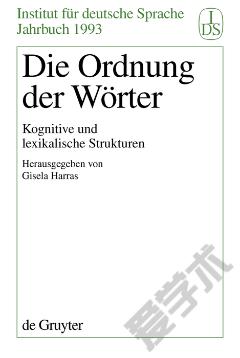Longitudinal Developments in Vocabulary Knowledge and Lexical Organization
Introduction Chapter 1. Defining and describing key constructs: Vocabulary and the mental lexicon 1.1 Defining the concept of vocabulary 1.2 Conceptualizing vocabulary knowledge 1.3. Defining breadth of vocabulary knowledge and vocabulary size 1.4. Definitions of depth of word knowledge 1.5. Storing vocabulary knowledge: The concept of the mental lexicon 1.6. What kind of information does the mental lexicon contain? 1.7. Is the mental lexicon language specific? 1.8. How is the bilingual mental lexicon structured? 1.9. Summary Chapter 2 Longitudinal developments in the breadth of vocabulary knowledge 2.1. Measuring vocabulary size 2.2. Development of the breadth of vocabulary 2.2.1. Patterns and profiles of development 2.2.2. The development of recognition vocabulary size 2.2.3. Comparison of the development of recognition vocabulary size in an intensive foreign language learning context and in an English for Academic Purposes programme in the UK 2.2.4. The development of recall vocabulary size 2.2.5. Comparison of the development of recall vocabulary size in instructed foreign language and target language contexts 2.2.6. Vocabulary size in relation to proficiency levels 2.2.7. Rate of development 2.2.8. Comparisons of development in recall and recognition vocabulary size 2.3. The role of word characteristics in the development of vocabulary size 2.4. Summary Chapter 3 Longitudinal development in the depth of vocabulary knowledge 3.1. Measuring depth of vocabulary knowledge 3.2. Investigating depth of vocabulary knowledge using stimuli word lists 3.2.1. Research method for a study on the development of depth of vocabulary knowledge of pre-intermediate learners of English 3.2.2. Analysis of depth of word knowledge 3.2.3. Development of depth of word knowledge of pre-intermediate learners 3.2.4. Developmental order for depth of word knowledge types3.3. Investigating depth of word knowledge using tests of vocabulary associations 3.4. Investigating depth of word knowledge by means of free production tasks 3.5. Summary Chapter 4 Longitudinal developments in the organization of the second language mental lexicon 4.1. Using word associations to analyse the mental lexicon 4.2. Word associations in second language acquisition research 4.2.1. Comparison of native and non-native associations 4.2.2. Exploring the mental lexicon through word associations 4.3. Investigating pre-intermediate learner's mental lexicon by means of word associations 4.3.1. Developments in the organisation of the mental lexicon of pre-intermediate learners 4.4. Comparison of the development of word associations in foreign and second language contexts 4.4.1. Results of the study 4.4.2. Discussion of findings 4.5. Summary Chapter 5 Second language learning and vocabulary development 5.1. Incidental and intentional vocabulary learning processes and conditions 5.2. Implicit and explicit vocabulary knowledge and learning 5.3. The role of input in vocabulary development 5.4. The role of noticing in vocabulary development 5.5. Encoding lexical knowledge in long-term memory 5.6. Output, interaction and vocabulary development 5.7. An overview of vocabulary development from the perspective of Dynamic Systems Theory Chapter 6. Individual differences in vocabulary development 6.1. The construct of working memory 6.2. The relationship between working memory and vocabulary development 6.3. Motivation, self-regulation and vocabulary development 6.3.1. Initial motivational conditions in vocabulary learning 6.3.2. The actional stage of motivated vocabulary learning 6.3.3. The post-actional phase of motivated vocabulary learning 6.4. Summary Chapter 7 Research implications for vocabulary teaching 7.1 Lexical space: breadth, depth and fluency 7.1.1 Lexical breadth 7.1.2 Lexical depth 7.1.3 Lexical fluency 7.1.4 The link between lexical breadth, depth and fluency 7.2 Incidental vocabulary acquisition 7.3 Explicit vocabulary instruction 7.3.1 The role of different types of input 7.3.2 The role of rich exposure and output tasks 7.3.3 The role of task-based teaching 7.4 Teaching formulaic sequences 7.5 The interdependence of vocabulary and grammar 7.6 Vocabulary instruction in the context of mobile learning 7.7 Summary References Appendices
{{comment.content}}








 京公网安备 11010802027623号
京公网安备 11010802027623号